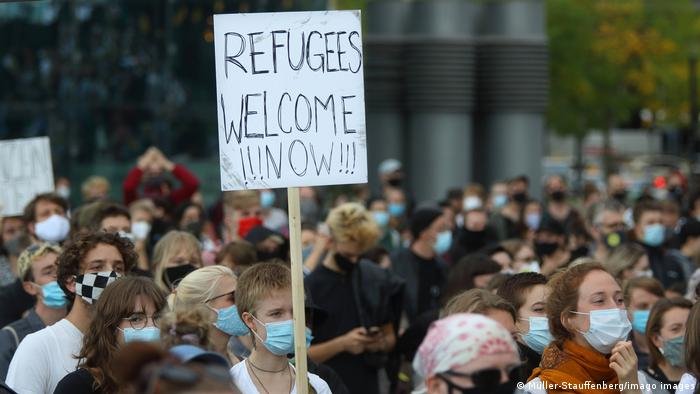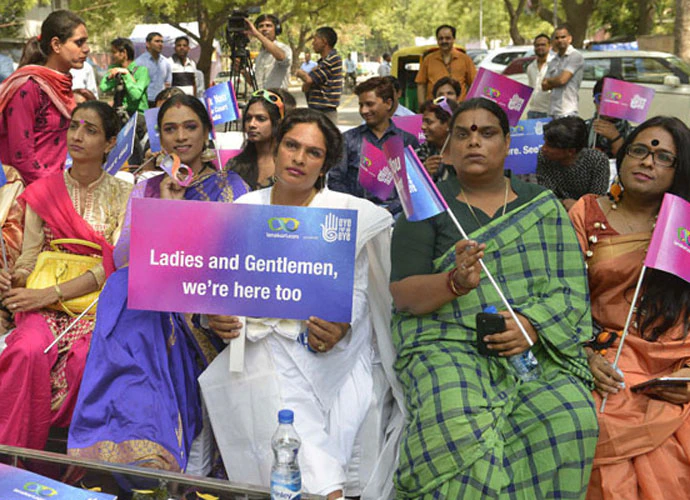Germany has long been a destination for migrants, shaped by its economic opportunities, social policies, and historical context. Official statistics from the Federal Statistical Office reveal that in 2024, approximately 21.2 million people with a migration background resided in Germany, constituting 25.6% of the total population. This figure, reflecting a 4% increase from the previous year, underscores the growing diversity of German society. This article delves into the nuances of Germany’s migration landscape, exploring the demographics, historical trends, reasons for migration, societal impacts, and the broader implications of these shifts.
Defining Migration Background in Germany
The term “migration background” or “Einwanderungsgeschichte” (immigration history) is a precise concept in German statistics. It encompasses individuals who either migrated to Germany themselves since 1950 (first-generation migrants) or are direct descendants of such migrants (second-generation migrants). Notably, individuals born in Germany with only one immigrant parent are excluded from this definition, highlighting the specificity of the term.
First-Generation Migrants
First-generation migrants, those who moved to Germany since 1950, numbered approximately 16.1 million in 2024, accounting for 19.6% of the population. This group represents a diverse array of origins, cultures, and motivations for migration. The Federal Statistical Office’s data indicates that this population has grown steadily, reflecting Germany’s appeal as a destination for economic and humanitarian migrants.
Second-Generation Migrants
Second-generation migrants, the children of first-generation immigrants, totaled just under 5.2 million in 2024. This group is significant as it represents the integration of migrant families into German society, often navigating dual identities. Their inclusion in the migration background statistics underscores the long-term impact of immigration on Germany’s demographic fabric.
Excluded Populations
Interestingly, the 4.1 million individuals born in Germany with only one immigrant parent are not classified as having a migration background. This exclusion raises questions about the boundaries of identity and integration in official statistics. It suggests a focus on direct lineage from post-1950 migrants, potentially overlooking the broader influence of mixed heritage in shaping modern Germany.
Demographic Breakdown by Age
The distribution of individuals with a migration background varies significantly across age groups, reflecting historical migration patterns and societal changes. In the 20-39 age group, approximately 34% have a migration background, indicating a high degree of diversity among younger adults. This demographic is often associated with economic activity and cultural dynamism, contributing significantly to Germany’s workforce and social landscape.
In contrast, only 14% of individuals over 65 have a migration background. This lower percentage reflects the historical context, as large-scale immigration to Germany, particularly from non-European countries, gained momentum in the latter half of the 20th century and into the 21st century. The disparity between age groups highlights the evolving nature of Germany’s population.
Historical Trends in Migration
The past decade has been transformative for Germany’s migration landscape. Between 2015 and 2024, nearly 6.5 million people immigrated to Germany from abroad. This period coincides with significant global events, including conflicts in the Middle East and Eastern Europe, which have driven humanitarian migration. The Federal Statistical Office’s data, drawn from the 2022 census and the 2024 micro-census, provides a detailed picture of these trends.
Key Countries of Origin
The primary countries of origin for recent migrants are Ukraine and Syria. The influx from these nations is largely tied to geopolitical crises. For instance, the war in Syria, which began in 2011, and Russia’s invasion of Ukraine in 2022 have displaced millions, many of whom sought refuge in Germany. These migrations have not only altered Germany’s demographic composition but also posed challenges and opportunities for integration and social cohesion.
Reasons for Migration
The reasons for migration to Germany are multifaceted, with the Federal Statistical Office identifying three primary drivers:
- Flight, Asylum, and International Protection (31%): Humanitarian crises have been a significant factor, particularly for migrants from Syria and Ukraine. Germany’s commitment to international protection has made it a leading destination for asylum seekers in Europe.
- Employment (23%): Germany’s robust economy, with its demand for skilled and unskilled labor, attracts migrants seeking better economic opportunities. Sectors such as technology, healthcare, and manufacturing have been particularly appealing.
- Family Reunification (21%): Many migrants join family members already residing in Germany, reflecting the importance of social networks in migration decisions.
These motivations highlight the complex interplay of push and pull factors driving migration to Germany, from global instability to economic incentives and personal ties.
Societal Impacts of Migration
The increasing presence of individuals with a migration background has profound implications for German society. From economic contributions to cultural enrichment and social challenges, migration is reshaping the nation in multiple ways.
Economic Contributions
Migrants play a critical role in Germany’s economy. The 23% of migrants who cited employment as their primary reason for moving to Germany contribute to addressing labor shortages, particularly in aging sectors like healthcare and construction. Research from the German Institute for Economic Research (DIW) suggests that immigrants have a net positive impact on the economy, contributing to tax revenues and consumer spending while filling critical gaps in the workforce.
“Immigrants are not just filling jobs; they are driving innovation and sustaining industries that would otherwise struggle with Germany’s aging population.” – DIW Report, 2023
Cultural Enrichment
Cultural diversity is another significant outcome of Germany’s migration trends. The influx of individuals from diverse backgrounds has enriched Germany’s cultural landscape, introducing new cuisines, traditions, and perspectives. Cities like Berlin and Frankfurt have become global hubs of multiculturalism, where festivals, markets, and community events reflect this diversity.
However, cultural integration remains a complex issue. While second-generation migrants often embrace German culture, they may also maintain strong ties to their ancestral heritage, creating a dynamic interplay of identities. This duality can enrich society but also spark debates about national identity and belonging.
Social Challenges
Despite the benefits, migration has also presented challenges. Integration policies, language barriers, and social cohesion are ongoing concerns. Studies from the Bertelsmann Foundation indicate that while many migrants integrate successfully, disparities in education and employment outcomes persist, particularly for first-generation migrants from non-European countries.
Public sentiment toward migration is another complex issue. While many Germans welcome diversity, far-right movements have gained traction in recent years, fueled by concerns over immigration. The rise of parties like Alternative für Deutschland (AfD) reflects these tensions, highlighting the need for balanced policies that promote integration while addressing public concerns.
Hidden Truths and Research Insights
Beyond the headline figures, several lesser-known aspects of Germany’s migration landscape warrant exploration. These “hidden truths” provide a deeper understanding of the dynamics at play.
Data Gaps and Definitions
The exclusion of individuals with one immigrant parent from the migration background category raises questions about the inclusivity of Germany’s statistical framework. This definition may underestimate the true extent of cultural diversity, as mixed-heritage individuals often navigate complex identities that influence society in meaningful ways. Researchers argue that broadening the definition could provide a more accurate picture of Germany’s demographic evolution.
Regional Disparities
Migration patterns vary significantly across Germany. Urban centers like Berlin, Munich, and Hamburg have higher proportions of residents with a migration background compared to rural areas. For instance, in Berlin, over 35% of the population has a migration background, compared to less than 15% in some eastern German states. These disparities reflect economic opportunities, historical migration patterns, and regional policies.
Long-Term Integration Trends
Longitudinal studies, such as those conducted by the Institute for Employment Research (IAB), suggest that second-generation migrants often outperform their parents in education and employment. However, disparities persist, particularly for those from non-European backgrounds. For example, children of Turkish immigrants, who form one of Germany’s largest migrant communities, face higher unemployment rates than their German peers, despite being born and educated in Germany.
Policy Implications and Future Outlook
Germany’s migration trends necessitate robust policy responses to maximize benefits and address challenges. Key areas of focus include:
Integration Policies
Effective integration policies are critical to ensuring that migrants and their descendants thrive in German society. Language acquisition programs, vocational training, and anti-discrimination measures are essential components. The Federal Government’s Integration Act of 2016 has made strides in this direction, but ongoing evaluation and adaptation are needed to address emerging needs.
Economic Strategies
To sustain economic growth, Germany must continue to attract skilled migrants while supporting the integration of low-skilled workers. Initiatives like the Skilled Immigration Act of 2020 aim to streamline the process for qualified professionals, but expanding access to training and recognition of foreign qualifications could further enhance outcomes.
Social Cohesion
Promoting social cohesion requires addressing both the opportunities and tensions arising from diversity. Community programs, intercultural dialogue, and education campaigns can foster mutual understanding. At the same time, addressing the concerns of native-born citizens through transparent communication and evidence-based policies is crucial to maintaining social harmony.
Conclusion
Germany’s migration landscape is a complex and dynamic phenomenon, shaped by historical trends, global events, and domestic policies. With 21.2 million people—25.6% of the population—having a migration background in 2024, the country stands at a crossroads. The contributions of migrants to the economy, culture, and society are undeniable, yet challenges such as integration, social cohesion, and public sentiment require careful navigation.
As Germany continues to evolve as a multicultural society, understanding the nuances of its migration patterns is essential. The data from the Federal Statistical Office provides a foundation for this understanding, but deeper exploration reveals the hidden truths and complexities that define this transformative period. By embracing evidence-based policies and fostering inclusive dialogue, Germany can harness the full potential of its diverse population, ensuring a prosperous and cohesive future.



















0 Comments